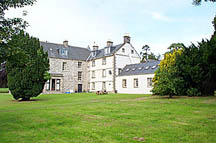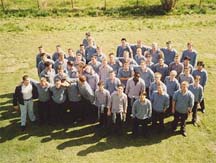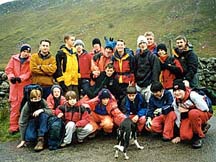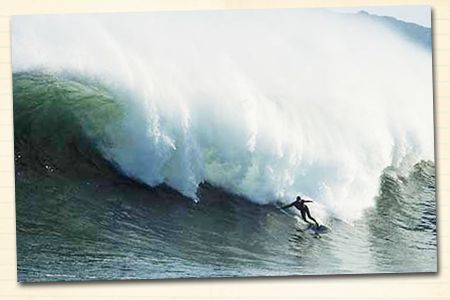|

Sunday, June 24, 2001

Slainte Mhath!
(good health!)

Scottish Naming Customs
The Scottish named their children as follows, although this was not always the case!
1st Son named after Father's Father
2nd Son named after Mother's Father
3rd Son named after Father
4th Son named after Father's oldest brother
5th Son named after 2nd oldest brother or mother's oldest brother
1st Daughter named after Mother's Mother
2nd Daughter named after Father's Mother
3rd Daughter named after Mother
4th Daughter named after Mother's oldest sister
5th Daughter named after 2nd oldest sister or Father's oldest sister
All of the Following information provided by Mary Powrie Schacht. Her family came from Tayside, along the Firth of Tay and were
mostly hand-loom weavers, with a fisherman, blacksmith and stone mason in the mix.
What is in a name? For a Scot, it can be lineage, a place of origin, a profession, a personal trait, a common nickname or a Haggis, with ingredients from all the above. If you think about small villages, where everyone knew everyone else, it is easy to see that last (surnames) were not necessary. Children were born, married and died in the same little town. You can image for yourself having two little boys in the village with the first name. People would naturally begin saying, "Oh you know, the tall, thin one."
Or perhaps, "He's the one who lives north of town, or upriver." People were defined by who their parents or grandparents were or if their fathers were gentry, masons or farmers. The book "Scottish Forenames" can speak on this subject both with more eloquence and authority so I quote Donald Whyte. "It is often said that the Scots had a traditional naming pattern which was more or less rigid, but while it was widespread it was not so unyielding as some genealogists have maintained." He is referring to the "custom of naming the first two boys and the first two girls in a family after the four grandparents. The elder son was named after the paternal grandfather and the younger after the maternal grandfather. The elder daughter was named after the paternal
grand- mother, and the younger after the maternal grandmother."
"Frequently third sons and daughters were named after their parents, if they did not have the same name of their parents, but this was not always the case, and aunts and uncles were chosen alternately from both sides of the family." While a child's birth and baptism record rarely shows more than one forename, children frequently carried the paternal and maternal grandmother's
maiden name and that of the mother. In this way, all the names of the lineage were carried forward. I have seen numerous examples of one child given a name, who then dies in infancy, and another child, born later, is given the same name.
I again quote "Scottish Forenames" in saying "It was thought to bring fortune to the child if there were 'name fathers' and 'name mothers', i.e. witnesses who bore the Christian (forename) being given the child." If the child was to be named Anne, Godmother's of the same forename were chosen. It is a little ironic that the first name is called Christian, as many of the names in the
"Isles" hail back to pre-Christian times. There are Gaelic, Hebrew, Norse, and Celtic names. Each invader left traces of themselves in the nomenclature. The English (Norman and Saxon), French and Latin, German and Greek left their marks, and their prodigy.
While the names repeat along the male line, each new marriage brought new names into the family. The names were also "exported" into other family lines with each marriage of the women from our family. The names give clues, but it is so easy to go chasing the wrong David, when each of 10 children try naming their children after their grandparents! I misquote Shakespeare "Oh what a tangled web we weave, when first we marry and then conceive."
An excerpt from Scots Kith and Kin, A comprehensive A-Z Guide to the surnames and their tartans by the Clan House of
Edinburgh. It was published first in 1953, the reprinted in 1989.
"An old Gaelic proverb says, 'Remember the men from whence you came.' (I have written out what it would be in Gaelic:
Cuimhnich air na daoine o'n d'thainig thu)
" …..By law, throughout Britain, we are require to take the surname of our father and his father before him, not that our
mother or even her father's family. The word 'surname' refers to another name which has been ' added on' to a first or
Christian name. Just how, and when, your family name was added to a forebear's first name can vary enormously. In
Lowland Scotland some territorial names were being introduced as surnames in the 11th century, mostly by landed people.
Then we see centuries of surname proliferation as men became known by their trades ('Taillour', 'Porter'), proximity to
geographical features ("Wood', 'Burnbank'), personal characteristics or coloring ('Little', 'Reid'), or by connection to their
father's name ('Johnson', Donaldson')." Literally John's son, or Donald's son. (The given name means exactly that, the one
which can be given to you. The surname is standard equipment.)
This last style, call patronymics, was popular when surnames came widely into use in the Highlands in the 16th century.
Gradually (and not until this century in the Northern Isles), the patronymics system was replaced by the adoption of a fixed
family name taken from an ancestral figure, or 'namefather' (the Scottish equivalent to Godfather), like Gregor, brother of
King Kenneth MacAlpine in the 9th century, from whom the MacGregors take their name. This removed the practice of
members of a generation taking their surnames from their own fathers' Christian names. John Robertson's father was
Robert Williamson whose father was William Thomson whose father was Thomas Davidson whose father was David……..
The process becomes confusing when you find that your MacDonald forbear was the son of a Donald Campbell.
In the great ancestry game, you will learn quickly that your surname is only the tip of the genetic iceberg. If your genuinely
MacDonald forbear had found himself isolated in the heart of Campbell country ten generations ago, had married Jean
Campbell, and seen his sons and grandsons married to Campbell girls, you would find yourself today with a bank of
forbears totaling 1,022, all of whom were Campbells except yourself and the nine named MacDonald in the direct male line.

An Excerpt from The Clans and Tartans of Scotland by Robert Bain
Personal names in English and Gaelic
|
Lads |
Lasses |
Adam, Adhamh
Albert, Ailbert
Alexander, Alasdair
Allan, Ailean
Alpin, Ailpein
Andrew, Aindrea
Angus, Aonghas
Archibald, Gilleasbuig
Arthur, Artair
Aulay, Amhladh |
Agnes, Una
Alice, Ailis
Amelia, Aimili
Angelica, Aingealag
Ann, Anna
Annabella, Anabladh, |
Barry, Barra
Bartholomew, Parlan
Benjamin, Beathan
Bernard, Bearnard |
Barbara, Barbara
Beatrice, Beitiris
Bessie, (Elizabeth), Ealasaid
Betsy, Betty, Beitidh
Bethia, Beathag (Beat the Hag?, lovely that!)
Bridget, Bride |
Callum, Calum
Charles, Tearlach
Christopher, Gillecriosd
Colin, Cailean
Coll, Colla
Conall, Connull |
Catherine, Catriona
Cecilia, Sileas
Christina, Cairistiona
Clara, Clare, Sorcha
|
Daniel, Daniel
David, Daibhidh
Dermid, Dairmad
Donald, Domhnull
Dugald, Dughall
Duncan, Donnchadh |
Diana, Diana
Dora, Doireann
Dorcas, Deporadh
Dorothy, Diorbhail, Diorbhorgail
|
Edward, Eideard
Evander, Iamhair, Iomhar
Ewen, Eobhann, Eoghan |
Effie
(Euphemia), Aoirig, Eighrig
Eileen, Eighlin
Eleanor, Eilionoir
Elizabeth, Ealasaid
Ellen, Eilidh
Emily, Aimil
Euphemia, Aoirig, Eighrig
Eve, Eugh |
Farquhar, Fearchar
Fergus, Fearghas
Finlay, Fionnla, Fionnlagh
Francis, Frank, Frang |
Flora,
Fionnaghal, Floraidh
Frances, Frangag
|
Gavin, Gabhan
Geoffrey, Goiridh
George, Sebras, Deorsa
Gerald, Gearald
Gilbert, Gilleabart, Gillebride
Gilchrist, Gillecriosd
Gillies, Gilliosa
Godfrey, Goraidh, Guaidhre
Gordon, Gordan
Gregor, Griogair |
Grace, Giorsal
Grizel, Giorsal (As appetizing as Haggis)
|
Harold, Harailt
Hector, Eachunn
Henry, Eanruig
Hugh, Aoidh, Uisdean, Huisdean |
Hannah, Una (same as Agnes)
Helen, Eilidh
Henrietta, Harriet, Eiric
Isabella, Iseabal |
James, Seumas
John, Iain, Eoin
Joseph, Joseph, Seosaidh |
Jane, Sine
Janet, Seonaid
Jean, Sine
Jessie, Sesi
Johann, Siubhan
Judith, Siubhan
Julia, Sileas
|
| Kenneth, Coinneach |
Kate, Ceit
|
Lachlan, Lachunn, Lachlann
Laurence, Labhruinn
Lewis, Louis, Luthais
Ludovic, Maldonuich
Luke, Lucais |
Lilias, Lileas
Lily, Lili
Louisa, Liusadh
Lucy, Liusadh |
Magnus, Manus
Malcolm, Calum
Martin, Martainn
Mathew, Mata
Maurice, Maolmuire
Michael, Micheil
Murdoch, Muireach, Murchadh
Myles, Maol-Moire |
Mabel, Moibeal
Margaret, Mairghread, Peigi
Margery, Marcail
Marion, Muireall
Marjory, Marsali
Martha, Moireach
Mary, Mairi, Moire, Muire
Mildred, Milread
Molly, Malai
Muriel, Muireall |
Neil, Niall
Nicol, Neacail
Ninian, Ringean
Norman, Tormoid, Tornod |
Nelly, Neilli |
Oliver, Olaghair
Owen, Aoghann |
|
Patrick, Padruig, Paruig
Paul, Pol
Peter, Peadair
Philip, Philip |
|
Ranald, Raonull
Richard, Ruiseart |
Racheal, Roaghnailt, Raonaild
Rosemanry, Rosmairi
|
Robert, Raibeart, Rob
Roderick, Ruadh
Ronald, Raonull
Rory, Ruairidh
Roy, Ruadh |
|
Samuel, Samuel, Somhairle
Simon, Sim, Sime
Somerled, Somhairle
Stephen, Steaphan |
Sally, Morag, Salaidh
Sheila, Silas, Sile
Sophia, Beathag
Susan, Siusaidh, Siusan
Sybil, Sibeal |
| Thomas, Tomas, Tamhas Torquil,
Torcull, Torcall |
|
Walter, Bhaltair
William, Uilleam |
Winifred, Una (Agnes, Hannah and Winifred…. Numeral
Una, one name fits all)
|
| |
|


Susan Duffus, wife of Samuel Cunard
Mentioned
Pierre Métivier, the Nautical stopover
Article published in the no#34 in 1990
Le 4 July 1840, it there has 17O years, the Britannia, first steamer of the British and North American Royal Mail Steam Pailet Company undertakes his trip
Inaugural Liverpool-Halifax-Boston. To his edge, among the 63 fleeting that kept a
place, Samuel Cunard, founder and principal actionnaire of the new company that will carry a day His name, is not little to trust. All while looking at the huge wheels
to dawns to beat the sea, induced by two machines to balanciers moved by the vapor, Cunard cannot prevent itself to think all the traversed way since his
childhood while, street Brunswick to Halifax, it directed himself to the step race
towards the King's Wharf to admire there the magnificent voiliers bringing angle-earth the trunk Royale.
Its ancestors, of fervent Scottish Quakers, had émigré to Philadelphie in
1683. His father Abraham, convinced royaliste, leave nevertheless this city during
the War American independence To come to establish itself to Halifax in 1780. Master carpenter, it is emploied to the work-sites navals of his city adoption
where, as they say, the vessels that one constructs are solid and of quality Equal
to those of European bill. Samuel is born the 21 November 1787. It passes his childhood in this maritime environment squarely effervescence and develop there a
fascination for the things of the sea, that it will maintain all his life.
The history kept little of things first years Samuel Cunard. All that one
knows certain manner, this is that it leave Halifax towards the end of his adolescence to occupy an employment with an armateur Boston where it does its
classes in the environment Matters and maritime commerce. Back in his native city in 1812, it is founded with his father the firm Abraham Cunard dc Sounds and
delivers itself to the commerce alongside the littoral atlantique with the Margaret,
their first vessel. Under the impulse of the young Samuel, the company takes quickly expansion and again Unities add to the float family. In 181S, it pulls out to
the British authorities the exclusive contract for the transportation of the Trunk
between Halifax, Earth-Nine, Boston and the Bermudes. Always to the research again unstopped commercial, Cunard travels a lot and, to 27 years, this is hardly
if it agrees a time of stop to marry Susan Duffus, the girl of a rich merchant d'Halifax.
When in 1820 his father takes his retirement and withdraws itself of the
company, the paternal firm, that it manages now only under The social reason S. Cunard k Co., possess not only a float imposing of voiliers and infrastructures
solid portuaires to Halifax but also interests in the commerce of the wood to the
New-Brunswick and iron to l'Île-du-Prince-Édouard. In 1828, Cunard is profondément affected by the death of his woman Susan, taken prématurément by
the fevers puerpérales ten days to Pain after to have given birth to his ninth child.
In 1830, now âgé 43 years, Samuel Cunard directs a float of 40 voiliers and his
company d' import-export is flourishing. Of the commercial happy and diversified
tractations assured for him a respectable fortune and its contemporary describe it
as a small skillful and crafty man, but also a man cœur, pleasant And religious
profondément. To the apogee of his career Canadian, it is part of the elite d'Halifax
that drove this city to the most prosperous period of his history.

Samuel Cunard was born to Halifax in 1787
where it développa a fascination for the
things of the sea, that it enters- will hold all
his life.
To the classes of the first years of the l9 ième century, a unusual novelty bring a
colored key to the history maritime world-wide: the apparition of the vapor as method of Propulsion for the vessels. The
French Pyroscaphe, the Charlotte Scottish Dundas, the Cler- mount of the American
Fulton, without to forget at our place the l'Accommodation mister Molson, are as
much balbutiements of a new Technology that do to smile the skeptical. On the l'Atlantique, the adventure of the Savannah in
1819 awakens the curiosity without more.
This three endowed American trois-masts of an auxiliary machine to
vapor who activated wheels to dawns repliables by big seas, had to the class of his crossing 29 used days his new device during 85 hours, burning all sound
combustible be 75 thunder of Coal and 25 ropes wood. In the years that follow, some vessels to mixed propulsion (veil and vapor) s'aventurent itself in high sea,
but these experiences remain épisodiques and without Next day; the vapor again did not conquer the popular favor. It is necessary to well say that, in their
obsession to free itself of the wind, the captains force too often the fires of their
machines infernales, what induces dramatic explosions or of Disastrous fires that
have very bad presses. But for the pionniers of the vapor, the problem to which one they are confronted is not Not any order publicitaire but technical. This
problem to resolve on the vapors that s'aventurent itself in high sea is the following: the bouilloires is supplied to the water sea and, to all the 3 days about.
it is necessary to extinguish the fires to rid these of the salt that itself there
accumulates.
This operation occupies the l'équipage during at least 24 to 36 hours of a
precious time and extend so much it crossed.
One can require oneself here what mister Cunard, retranché in his strongmchâteau of d'Halifax, think of this maritime technology Revolutionary. Not big thing!
As besides the majority powerful armateurs of the era, it have just had to do not
n'entrevoit again the day where the vapor détrônera the graceful clippers thatbcinglent on the l'Atlantique all sails outsides.
Invited to submit in 1829 a project of maritime liaisons Halifax-quebec by
vessels to vapor, it declines the offer, itself saying little to the fact of this new
technology to which it does not grant hardly his confidence.
It dut quickly to change idea since two years later it associates himself
financially in the adventure of the Royal William, this vapor constructs to Quebec
in 1831 that was going to become in 1833 the first Vessel to vapor to cross the l'Atlantique North (to see THE STOP. #2). Little of times after the prowess of the
Canadian vessel, two facts historic: an invention and a race transatlantique, will
come confer to the vapor the letters nobility and overturn the maritime transportations on the l'Atlantique.
The have just had to perfect sea condenseur patenté by Samuel Lobby in
1834 allows henceforth the usage continue vapor, freing the l'équipage of the painful corvée cleaning of the Bouilloires, that will be supplied by distilled water.
This appeared invention to not at all named decide in 1837 h British and American
Steam Navigation Co. of Londres to put at work a luxurious vessel to vapor, the British Queen that, hope-t-one, will unhook for his compa gnie the signal honor to
become the First steamer to establish a liaison uniform transatlantique. the construction of the vessel having undergone of the unforeseen delays, the
company londonienne risks many nant to do itself damer the pion by a rival company of Bristol, the Great Western Railway Co . of which the Great Western
is all Fine ready to launch itself dan the prestigious adventure. Well decided to to
not leave to beat itself speed by the Great Western , the company Londres. affrète the Sirius , a vessel côtier qu operates on the Sleeve and that is
endowed new Condenseur. With 5O fleeting to his edge, the Sirius puts the cape on New York April 4 1838.
The 8, the Great Western leaves Bristol to his turn and, to full vapor, itself
launch on the traces of his opponent The two vessels will attain the American métropole the same day, be the 2 April, the Sirius preceding his Rival of some
four hours. The two vessels and their équipages will be royalement celebrated by
the New-Yorkais and, while the Sirius itself deserved the honor of the first crossing transatlantique under the constant action of the vapor, the Great
Western itself glorifiait to have been the more quick.
This historic race between the two vessels fit clearly it demonstration of
possibilities offered by vessels to vapor affected to the commercial liaisons transatlantiques and modifia favorably to the breast of the maritime world the
opinion generally Véhiculée on these. Thus, to the class of this same year 1838,
the British l'amirauté, nevertheless importantly conservative, launch through
worsen a call for it of offer for the transportation of the trunk royale between the
l'Angleterre and the america of the North by boats h vapor.
Samuel Cunard, that had very been impressed by the operation Sirius, is the
one of the first to reply to the invitation of the All-powerful maritime assembly. Two
of its suggestions having unknown summer, it embarks himself for provided Londres of a letter introduction governor of the New-Scotland for the secretary of
the l'amirauté.
To Londres, Cunard is received and the l'amirauté shows interested by his
project to establish a line transatlantique between the l'Angleterre And Halifax with
at least three steamers 300 cv. This line principal would do the link with two secondary lines – the one towards Boston and the other towards Quebec – and
these would be Desservies by vessels 15O cv. To grant more weights to the serious of his suggestion, Cunard the l'assortit of penalties for the non-respect of
schedules established. what to the l'heur to please the more high not at all to the
l'amirauté.
While this last study his project, Cunard meets Robert Napier, the celebrate
maritime engineer of Glasgow to which one it secures itself quickly friendship what's more of some to do his more enthousiaste partner.
Without the l'apport of exterior capitals, Cunard knows very although it
Cannot realize only his project. Napier present it then to of rich financial environment Maritime of Glasgow. Among the principal approached investors,
Georges Burns and David Maciver decide to join itself to Napier and Cunard to be
founded the company to the name pompeux that one knows.
After of laborious negotiations with the l'amirauté, the contract final is
signed May 4 1839; it stipule that 4 vessels to vapor of 1100 barrels and of a power 440 cv will establish a Direct line Liverpool-Boston with a stop to Halifax.
The project Of a secondary line towards Quéhec also is maintained. The service must begin to the summer 1840; the four first cunardiers: the
Britannia*, the l'Acadia, the Caledonia and the columbia, are Immediately put at work. The new
company does meanwhile I'S ACQUISITION l'Unicorn , a small steamer 648 thunder that she destine to the liaison towards Quebec and that becomes the first
of a long series of vessels celebrate that will animate the saga of the company Cunard.


extracted from: http://www.gordonstoun.org.uk/grdnstn/pastoral/duffus/duffus.htm
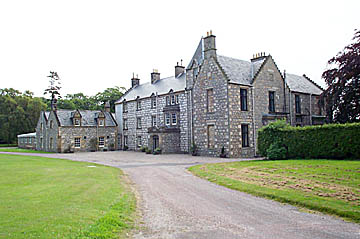
Duffus
House has many strengths not least of
which is its peaceful location at the Western end of the Gordonstoun
campus. The house was built at the end of the 17th Century around
the same time as Gordonstoun House itself, and extended considerably
in Victorian times. It was the home of the Dunbar family, and the
current Laird, Sir Archibald Dunbar and his wife Lady Amelia are our
nearest neighbours. Duffus became the original boarding house at
Gordonstoun and was presided over by the school's founder Kurt Hahn
himself.
The house is situated in its own extensive grounds about 1km from
the centre of the school campus. It is home to my wife and I ( plus
our son Fergus and Flo the collie) and the Assistant Housemaster (AHM),
Mr Farmer, as well as to fifty plus 13-18 year old boys and young
men. In addition to the Housemaster or AHM being on duty there a
five tutors who are in the house for one night each, Monday to
Friday from 6.45pm until 10pm. The Duffus tutors are all outstanding
and dedicated professionals who paid me a great deal of money to
mention them in these glowing terms. The house extremely friendly,
happy and industrious and it provides an environment from which its
inhabitants can tackle the stimulating challenges which Gordonstoun
will provide with great confidence.
Steve Brown
|
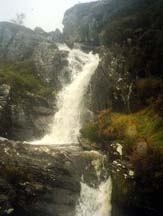
Nice 'ere innit

Paul Duffus
extracted from: http://www.project-ability.co.uk/trongate%20studios%20site/artists/paul%20duffus.htm
 |
Paul
Duffus
Title: Flowers in bloom
Medium: Acrylic and Ink
Date: 2000
|
|
| "
My work is in the Expressionist tradition, making paintings/
drawings/ prints in expressionist realism; subjects include
landscape/ figurative and abstract. "
"
I utilise the therapeutic qualities involved in the process of
creating art."
"
Whilst at the Royal College I was diagnosed as schizophrenic and
had a number of admissions to psychiatric care. Since returning to
Scotland in 1988, I have kept fairly stable and the therapeutic
aspects of painting have allowed me to work out problems and
therefore admissions to care have been minimal."
|
|
